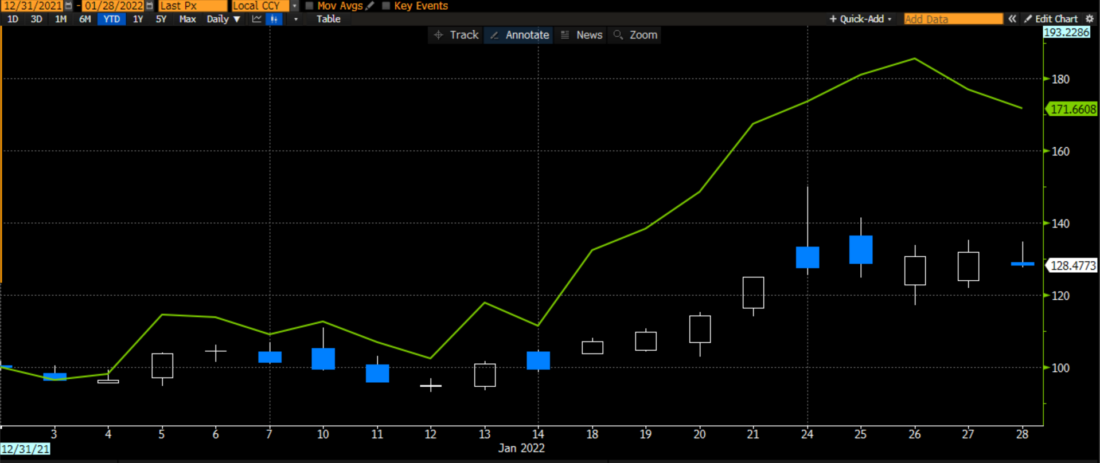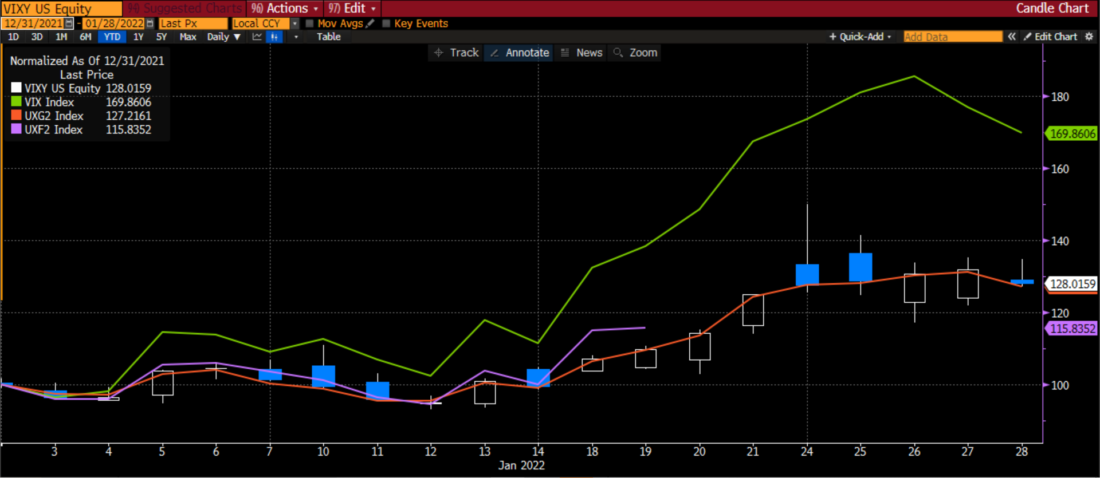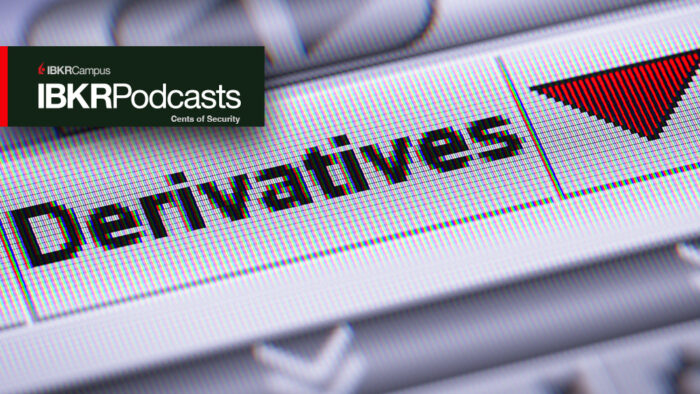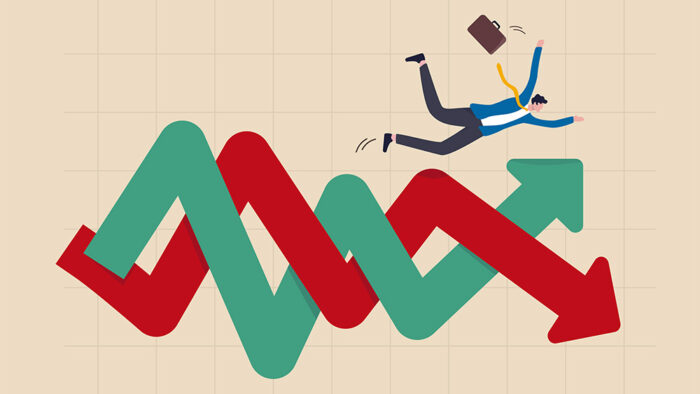Which of these two would you rather hold? The following graph shows the normalized year-to-date performance of two very similar items. One is up over 29% in that time frame, which is a robust rise, but it pales in comparison to its counterpart, which is up over 72%. Let’s take a look:
Year-to-date Normalized Chart of Two Items to Be Revealed Later

Source: Bloomberg
Obviously one would rather hold the item displayed by the green line. Who wouldn’t want to hold something with more than double the return of the other?
The problem is that the green line shows the performance of the CBOE Volatility Index (VIX), which is not directly investable. There are VIX futures and options, but while they are actively traded products, none of them enable a trader to actually hold the index. VIX is not like the S&P 500 Index (SPX) upon which it is based. One can buy the 500 stocks that comprise SPX in the proper ratios. Realistically, doing so is the exclusive province of institutional investors, but there is no shortage of index funds and ETFs that allow individual investors to own a small pro-rata slice of that portfolio. VIX is instead “a calculation designed to produce a measure of constant, 30-day expected volatility of the U.S. stock market, derived from real-time, mid-quote prices of S&P 500® Index (SPX℠) call and put options.” In theory one could buy all the options with non-zero bids that make up the continually changing VIX calculation, but doing so is essentially infeasible. That is why investors use proxies like futures, options, and ETFs to gain exposure.
A popular proxy is VIXY, the Pro-Shares VIX Short-Term Futures ETF, which is represented by the blue/white candles in the graph above. My original gut instinct was to criticize the ETF itself for the underperformance. We have previously discussed the systematic underperformance of an ETF that holds derivatives because those derivatives expire. Futures and options must be rolled prior to expiration, which has a slippage cost. More importantly, options decay, and a futures market that is in contango tends to see futures with longer expirations decline in value relative to the front contract. Yet in the case of VIX, if we want exposure to the underlying index we really don’t have a choice about owning derivatives. The following graph shows that VIXY have tracked the futures rather well, actually:
Year-to-date Normalized Chart of VIX (green), VIXY (blue/white), January (purple) and February (red) VIX futures


Source: Bloomberg
The inversion of the VIX curve has likely helped VIXY, because it allows them to replace near-month and near-week futures with longer-term counterparts that are trading at lower prices. That offsets the roll costs outlined in the article linked above.
My aversion to derivative-linked ETFs is well-noted. I urge everyone who considers owning one to read the prospectus, particularly those that offer 2X, 3X or inverse performance. These instruments acknowledge that while they attempt to match the daily performance of their benchmark, they tend to systematically underperform. Here is an excerpt of the Proshares Trust II filing, which includes VIXY:
“THE RETURN OF A GEARED FUND FOR A PERIOD LONGER THAN A SINGLE DAY IS THE RESULT OF ITS RETURN FOR EACH DAY COMPOUNDED OVER THE PERIOD AND USUALLY WILL DIFFER IN AMOUNT AND POSSIBLY EVEN DIRECTION FROM THE GEARED FUND’S STATED MULTIPLE TIMES THE RETURN OF THE BENCHMARK FOR THE SAME PERIOD. THESE DIFFERENCES CAN BE SIGNIFICANT.”
It is incumbent upon anyone investing in an ETF that uses derivatives to understand this concept. But if one wants to use a volatility-tracking ETF, they have little choice but to utilize this type of instrument.
Disclosure: Interactive Brokers
The analysis in this material is provided for information only and is not and should not be construed as an offer to sell or the solicitation of an offer to buy any security. To the extent that this material discusses general market activity, industry or sector trends or other broad-based economic or political conditions, it should not be construed as research or investment advice. To the extent that it includes references to specific securities, commodities, currencies, or other instruments, those references do not constitute a recommendation by IBKR to buy, sell or hold such investments. This material does not and is not intended to take into account the particular financial conditions, investment objectives or requirements of individual customers. Before acting on this material, you should consider whether it is suitable for your particular circumstances and, as necessary, seek professional advice.
The views and opinions expressed herein are those of the author and do not necessarily reflect the views of Interactive Brokers, its affiliates, or its employees.
Disclosure: Complex or Leveraged Exchange-Traded Products
Complex or Leveraged Exchange-Traded Products are complicated instruments that should only be used by sophisticated investors who fully understand the terms, investment strategy, and risks associated with the products. Learn more about the risks here: https://gdcdyn.interactivebrokers.com/Universal/servlet/Registration_v2.formSampleView?formdb=4155
Disclosure: Options Trading
Options involve risk and are not suitable for all investors. Multiple leg strategies, including spreads, will incur multiple commission charges. For more information read the "Characteristics and Risks of Standardized Options" also known as the options disclosure document (ODD) or visit ibkr.com/occ
Disclosure: Futures Trading
Futures are not suitable for all investors. The amount you may lose may be greater than your initial investment. Before trading futures, please read the CFTC Risk Disclosure. A copy and additional information are available at ibkr.com.
































